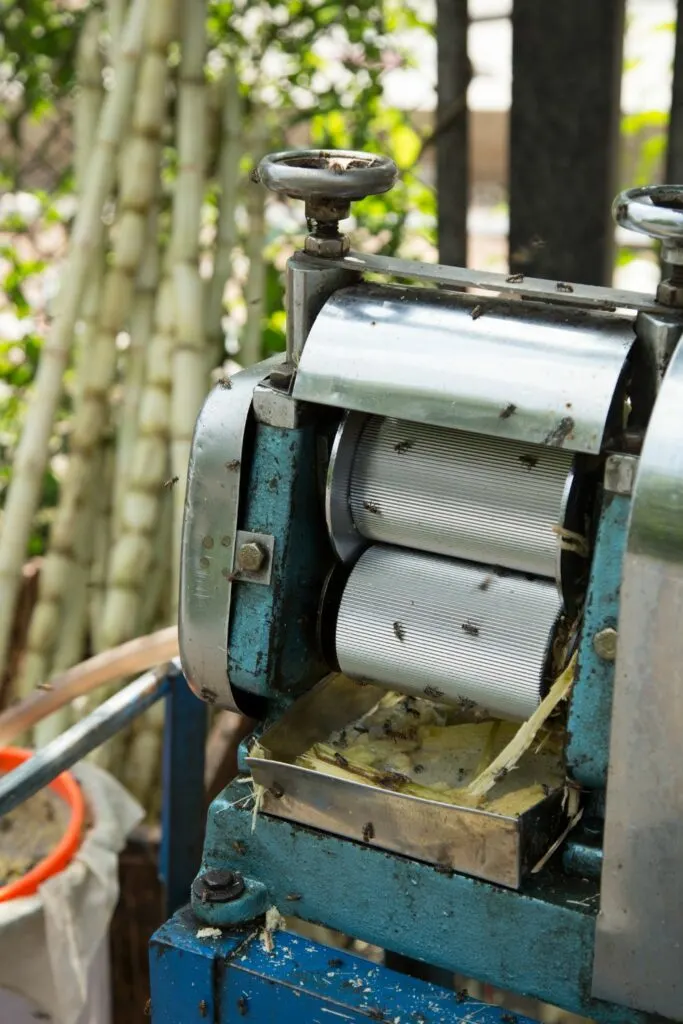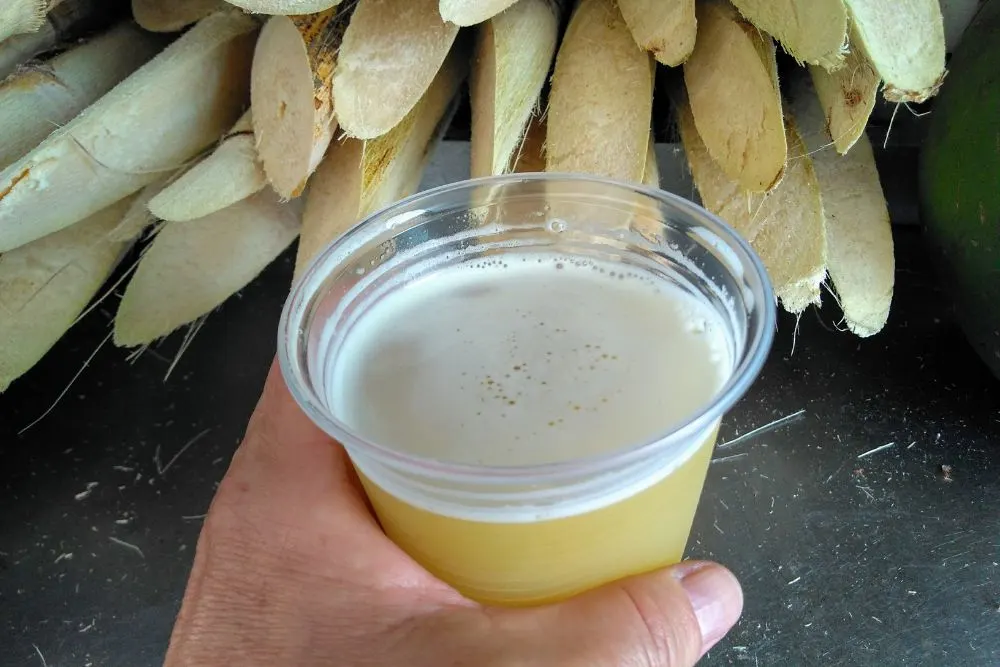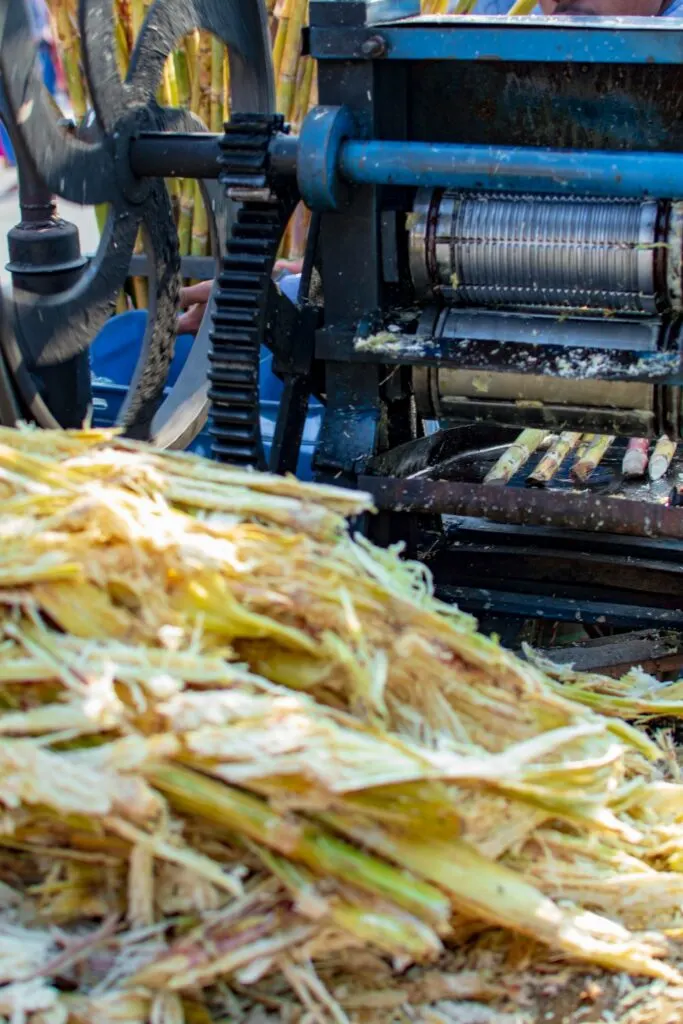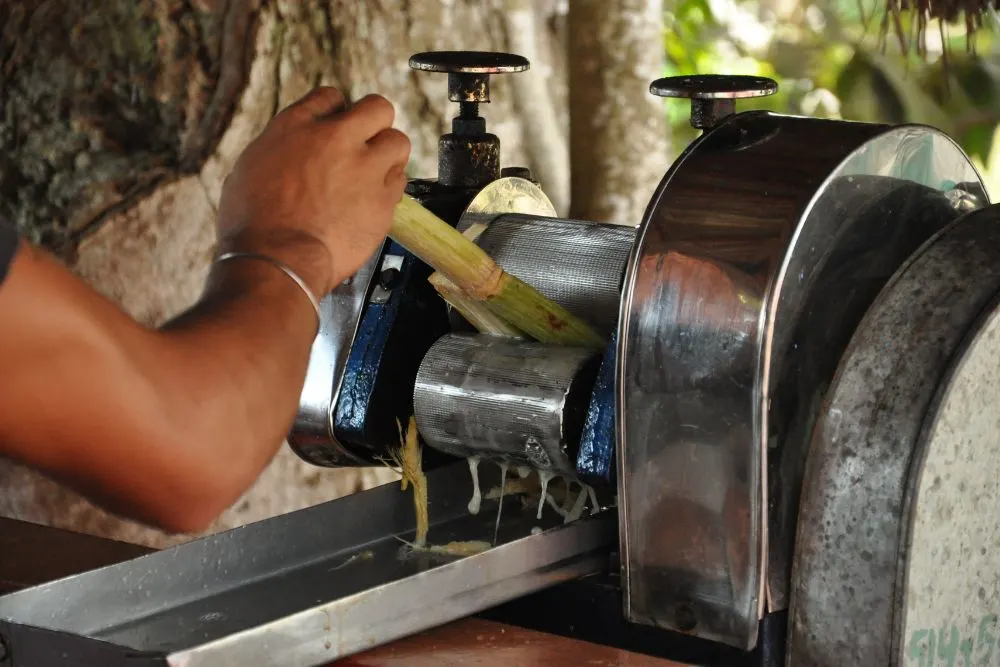Sugarcane juice is a popular and refreshing drink, particularly in countries with a hot climate. Its growing popularity can be attributed to its health benefits and affordability.

The demand for sugarcane juice is high in countries such as India, Brazil, and many African countries due to their large sugarcane production. As people become more health-conscious, the sugarcane juice business is poised for significant growth in the coming years.
Business Plan
To start a successful sugarcane juice business, you need the following elements in your business plan:
- Target market: Identify your target market and analyze their preferences. This will help you design your product offerings according to their taste.
- Product offerings: Decide on the variety of sugarcane juice flavors you want to offer. You can add flavors or other healthy ingredients to make your product stand out.
- Firm registration: Register your business entity by choosing the right form of business. If you’re starting small, a proprietorship or a single-member LLC would be suitable.
- Supplier relations: Establish relationships with sugarcane farmers to ensure a consistent supply of quality raw materials.
- Equipment: Invest in a durable and efficient sugarcane crushing machine to maintain consistent juice production.
- Promotion: Advertise your business online, through social media, and by distributing flyers and business cards.
Investment and Profits
The initial investment in the sugarcane juice business depends on the size and scale of your venture. You need to invest in equipment, raw materials, and other operational costs. Profits in the sugarcane juice business can range from Rs. 3,000 to Rs. 5,000 per day during the peak season. To maximize profits, offer a variety of flavors and prioritize customer satisfaction.
Location and Street Vendor Ship
Choosing the right location for your sugarcane juice business plays a significant role in its success. High foot traffic areas, such as busy markets, malls, tourist spots, or near offices and schools, are ideal locations. You may also consider obtaining a street vendor permit to set up a mobile stall in various locations, which can expand your customer base and enhance your business’s visibility.

Setting Up Your Cane Juice Production
Machinery and Equipment
To begin your sugarcane juice production, you’ll need some essential machinery and equipment. First and foremost is the sugarcane juice machine used to extract juice from the sugarcane efficiently. Besides the juicer, other equipment includes a sugarcane peeler, stainless steel tables for processing, and storage containers.
Here are some equipment you’ll need:
- Sugarcane juicer
- Sugarcane peeler
- Stainless steel tables
- Storage containers
Register Your Business and Licenses
When starting any business, it’s crucial to register your business and obtain the necessary licenses to operate. For a cane juice production business, you may require both general business licenses and specific food and beverage licenses to comply with local and country regulations. Contact the appropriate government agencies to acquire these licenses and become a legally operating business.
In addition to licenses, registering a trademark for your cane juice brand will provide your business with legal protection and brand recognition, ensuring that your products stand out in the market.
Processing and Bottling Plant
To maintain a high-quality, safe, and shelf-stable product, the processing and bottling procedures are essential in sugarcane juice production. According to a LinkedIn article, sugarcane juice is extracted from the cane by pressing it through iron rollers, and it is both nutritious and refreshing. To ensure that the juice remains fresh and retains its nutritional value, proper preservation methods such as canning are necessary. Consider investing in a water bath steam canner to seal your bottles without affecting the juice’s quality.
Creating a clean and well-organized processing and bottling plant ensures that your production cycles are efficient, and your product remains consistently high in quality. Additionally, adhering to food safety regulations will help you maintain a positive reputation and build trust with your customers.
Setting up your cane juice production and keeping it running smoothly involves acquiring the right machinery and equipment, registering your business and any necessary licenses, and establishing a well-organized and efficient processing and bottling plant. Following these guidelines will help you create a successful and profitable sugarcane juice business.

Preparing Sugarcane Juice
Clean the Sugarcane
Before you begin making sugarcane juice, it’s essential to clean the sugarcane thoroughly. Start by washing the sugarcanes well and peeling off the hard outer layer with a sharp knife. Be careful while doing this to avoid injuries. Once you have peeled away the outer layer, cut them into smaller pieces for easier extraction of the juice.
Sugarcane Extracting Machines
There are various sugarcane extracting machines available in the market, ranging from manual, semi-automatic to fully automatic machines. Manual crank sugarcane juicers are an affordable option for home use, while semi-automatic and automatic sugarcane juice extracting machines are typically found in commercial settings.
For preparing sugarcane juice at home, you can peel the sugarcane, cut it into small pieces, and use a manual crank sugar cane juicer to extract the juice. If you prefer, you can also use a semi-automatic or automatic sugarcane machine.
Adding Ingredients and Flavoring
In addition to the extracted sugarcane juice, you can opt to add some ingredients and flavorings to enhance the taste. Here are some suggestions:
- Ginger: Adding a small piece of ginger to the sugarcane while juicing or blending gives a refreshing, spicy kick to the juice.
- Mint leaves: Fresh mint leaves can be added either during juicing or as a garnish, imparting a cooling and refreshing flavor to the sugarcane juice.
- Lime juice: A tablespoon or two of fresh lime juice adds a tangy twist to the sweet sugarcane juice. It also helps in preserving the juice for a longer duration.
- Peppermint: Similar to mint leaves, peppermint can also be added to the sugarcane juice for an extra layer of flavor and freshness.
Remember to experiment with these flavorings to find the perfect combination that suits your taste buds. Now that you know how to make sugarcane juice at home, enjoy this healthy and delicious beverage!

Nutritional Benefits of Sugarcane Juice
Sugarcane juice is a popular beverage in many tropical countries. This delicious and refreshing drink is packed with several nutrients that contribute to its potential health benefits. In this section, we will discuss the nutritional profile and benefits of sugarcane juice.
One of the significant aspects of sugarcane juice is its low calorie and fat content. For every 100 milliliters, it contains only 39 calories and 9 grams of carbohydrates. Besides, it has almost no protein or fat content, making it a light and hydrating beverage.
Sugarcane juice is also a good source of essential minerals such as calcium, magnesium, potassium, iron, and manganese. These minerals are responsible for making the juice alkaline in nature, which contributes to its health benefits. Calcium and magnesium, for example, aid in maintaining healthy bones and teeth, while potassium is vital for regulating blood pressure and heart function.
In addition to minerals, sugarcane juice is rich in vitamins, particularly vitamin C. As an antioxidant, vitamin C plays a crucial role in boosting our immune system, promoting skin health, and aiding in the absorption of iron from plant-based sources.
As sugarcane juice is high in natural sugar, it provides a quick burst of energy. This makes it an ideal beverage for those who need a refreshing energy boost, especially during hot summer days or after a workout. However, it’s important to remember that moderation is key when consuming sugarcane juice, as the high sugar content could prove detrimental to health if consumed excessively.
Lastly, some studies have indicated that sugarcane juice may aid in maintaining kidney health due to its low-cholesterol and low-sodium content coupled with having no saturated fats. This combination of nutrients can help keep our kidneys in top shape, ensuring efficient waste elimination.
In summary, sugarcane juice is a delicious and healthful beverage that offers numerous potential benefits, thanks to its nutritional profile rich in minerals, vitamins, and natural sugar content. So next time you’re in the mood for a refreshing drink, consider reaching for a glass of sugarcane juice!

Packaging and Preservation
Preserving sugarcane juice is essential to retain its quality, taste, and shelf life. The packaging process plays a vital role in this regard. Packaging and preservation techniques aim to keep the juice fresh, prevent spoilage, and extend its shelf life. In this section, we will discuss the aspects of quality control and fermentation in the packaging and preservation of sugarcane juice.
Quality Control
To ensure the quality and safety of sugarcane juice, it is necessary to implement stringent quality control measures. These measures include selecting the finest sugarcane, thoroughly cleaning the raw material, and filtering the juice to remove impurities. Proper hygiene practices are also necessary to prevent contamination from bacteria and other pathogens.
Packaging plays an essential role in maintaining the quality of the juice. Containers made of materials such as glass or PET have been found to be suitable for storing sugarcane juice. These containers help preserve the juice’s taste, aroma, and nutrients, also extending its shelf life A technological review on processing of sugarcane juice.
Fermentation
Fermentation can be both a beneficial process and a spoilage mechanism in sugarcane juice preservation. On one hand, it helps in the production of jaggery and other value-added products. On the other hand, uncontrolled fermentation can spoil the juice and make it unsuitable for consumption. To address this issue, controlling the growth of microorganisms and managing the acidity level of the juice are critical.
Fermentation can be slowed down by adding preservatives such as acid or reducing the pH to inhibit microbial growth. For example, citric acid is commonly used to reduce the pH and achieve better preservation of sugarcane juice. Another method to control fermentation and spoilage is through pasteurization, which involves heating the juice to a particular temperature for a specified time, inactivating enzymes, and killing harmful bacteria.
In conclusion, proper packaging and preservation techniques, along with strict quality control measures, ensure that sugarcane juice retains its freshness, nutritional value, and taste. By controlling fermentation, preventing spoilage, and using appropriate packaging materials, it is possible to produce a high-quality, safe, and enjoyable sugarcane juice product.
Marketing and Expanding Your Business
Branding and Trademark
Creating a strong brand is essential for any business, especially when entering the competitive beverage industry. For your cane juice business, develop a unique logo that represents your brand, making it memorable and appealing to customers. Work with a professional designer to create a logo that reflects your brand values and the qualities of a healthy beverage.
Take the necessary steps to register and trademark your logo and business name. This protects your brand from being misused by competitors and helps establish trust with customers, knowing they are purchasing an authentic, high-quality product.
Targeting the Health Conscious Market
Sugar cane juice is a natural juice that provides a fresh and healthy alternative to traditional, sugar-filled beverages. To effectively reach the health-conscious market, focus on promoting the nutritional benefits of your product. Some key selling points include:
- Low in calories: Sugar cane juice is lower in calories compared to other sugary drinks, making it an attractive option for those looking to cut down on their calorie intake.
- Rich in nutrients: Sugar cane juice contains essential vitamins and minerals, such as calcium, potassium, and magnesium, which are beneficial for overall health.
- Hydration: As a natural juice, sugar cane juice provides hydration, making it a refreshing and appealing choice for the health-conscious consumer.
To further appeal to the health-conscious market, consider offering a range of natural juices that complement your sugar cane juice products, demonstrating your commitment to providing customers with a variety of healthy beverage options.
Another strategy involves positioning your cane juice business as a seasonal business, promoting the freshness and quality of your product during peak sugar cane harvesting months. Emphasize the sustainability and eco-friendliness of your business, using recyclable packaging, local sugar cane sources, and waste reduction initiatives.
Keep an eye on the market outlook for natural juices and adjust your marketing strategies accordingly to remain competitive in a dynamic industry. Continuously analyze customer feedback and trends, refining your product offerings and promotional efforts to meet the evolving demands of the health-conscious market.
By focusing on these areas and implementing effective marketing strategies, you can successfully expand your sugar cane juice business and establish a strong presence in the healthy beverage industry.
